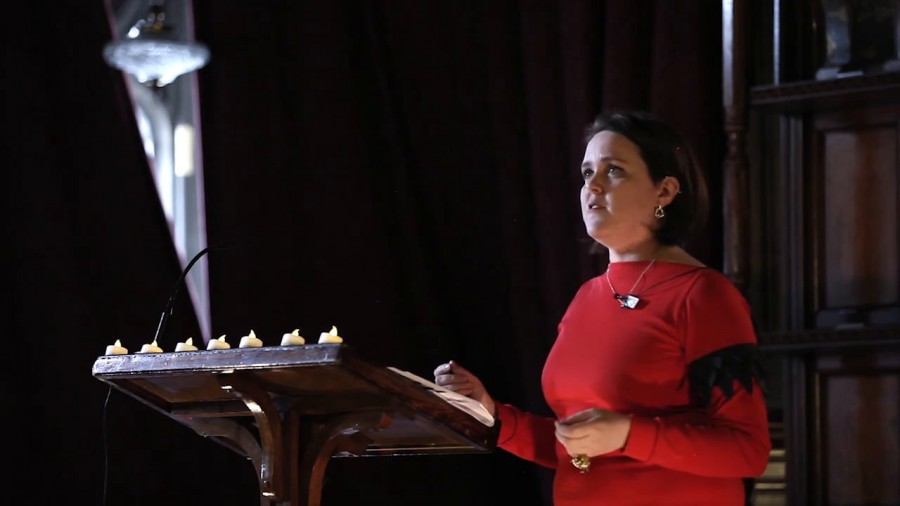What I’m going to talk about today is partly in response to having watched The Craft about four times over the past two weeks while I’ve been pulling this talk together, but partly something that’s been striking me as being around for a while since I’ve been thinking about where technology and hauntings and the supernatural start locking into each other. That’s kind of in terms of visions and in terms of expectations and in terms of what actually is being summoned into the world and by who and in what way. There’s been elements of this being touched on today, but this is something I’ve had in my mind for a while and quite frankly any excuse to watch The Craft again repeatedly was welcome. I will say at this point, the original slide deck was primarily going to be Fairuza Balk, a lot of her. I’ve pulled back from that to get more relevant slides in but there’s still some so we’re going to work with that.
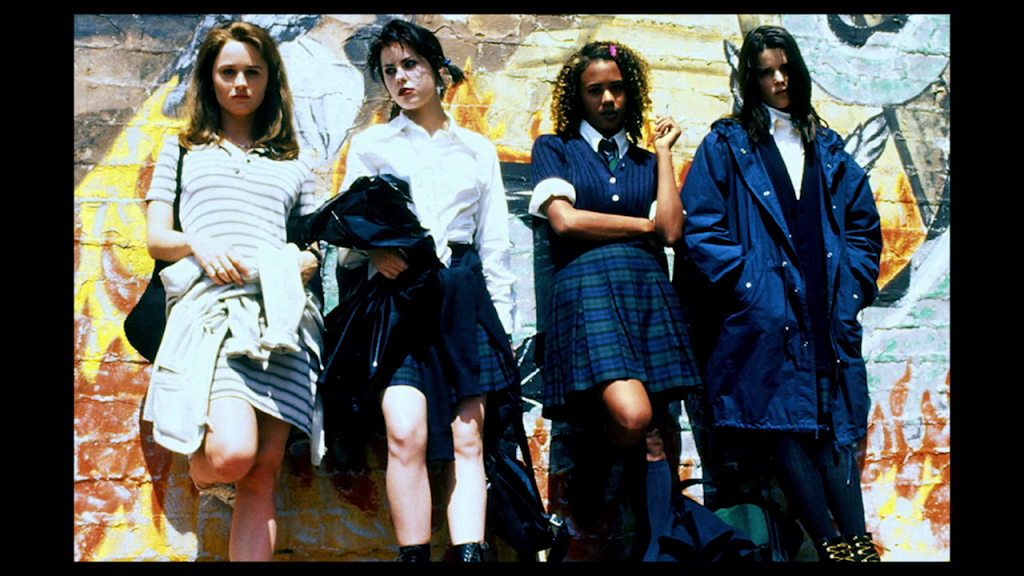
The Craft, for those of you who don’t know it is a film from 1996, and it’s kind of the supernatural pop culture teenage high school horror precursor to Buffy and all the stuff that came after that as well. The plotline is fairly straightforward. There are four girls, they meet each other at high school. They all are having a fairly horrible time but in various different ways. One of the girls is being bullied, one’s being slut-shamed, one’s being racially bullied, the third girl is also being bullied for having various scars on her, and the fourth is just having a pretty miserable time of it with a really horrible home life.
They find each other, they get together, they figure out that as the four of them they can form essentially a coven, they start to do magic. They start to summon forces together and their lives start to change. It’s a great mid-90s movie. It’s got a soundtrack that is exactly what you’d expect, with things like Elastica on it. It’s got a very very very young Neve Campbell in it, very very young Fairuza Balk, very young Skeet Ulrich, and it’s generally part of the genre. It works pretty well.
So in all of those ways it acts as a kind of precursor to what is the horror of high school life actually like when you’re a teenager and what would it be like if you could actually start to summon magic into that world as well? So on that level it works, it’s fine, it’s great.
But. What’s really interesting about it when I watched it on multiple viewings is the magic that they do. There is a bit of material magic in there. There is some physical stuff and physical changes to the world that starts happening. But a lot of what they do, a lot of their summonings are about changing visions and changing expectations as well. And it initially happens after they’ve tried appeals to reason and to science and technology.
Two of the girls who are being bullied go to their tormentors and say essentially, “What’s happening? Why are you doing this? What’s going on? Why would you do this? Could you just please stop?” And their tormentors say, “No, just no, why would we?” One of the girls, the one who has scars on her, goes through what is implied to be the latest in a very very long line of medical treatments that are costly and deeply painful and appear not to be working. And the girl Nancy who’s having a horrible home life, there is nothing she can really do about it. She’s still a teenager, she can’t leave, she doesn’t have the resources.
So it’s not until they start summoning these visions and expectations into the world that the world itself starts to change around them. They do things like they change how they look. They start to cast expectations around love. They start to cast visions around death, around serpents, around spiders. They move in and out of each other’s dreams. There’s alot of how the world changes when they start to change the expectations and visions that come around it as well.
This is interesting because what’s happening here isn’t just that they set up a fancy, they set up a glamour and something happens. What happens is they set up this change of scene and suddenly the world starts to move around it as well. This is the latest in a very very long line through magic, throughout history, throughout technology, of people who can invoke visions, who can see things, who can go beyond some kind of material realm and kind of grab something and pull it through, for whatever ends there are. Things that you might see in the smoke or see in the dust or see in the entrails or hear in the air or find in the water. Or things where you go to a circle and you hold hands and someone grabs your face and tells you, “Actually I think there’s someone in this room, a relative who might be dead? who maybe had a name that begins with J? Yeah? You went to the beach once? Yes? Brilliant! Okay, come forward.”
There’s this idea of these visions that go beyond what we can just see now, and that’s really interesting and always has been. But it’s this idea that what is beyond that is actually in the power of it. It’s the expectations themselves that start to change the material qualities of our world, the material qualities around science and technology, around our political activities. That it’s not just that the entrails have been read, but the fact that you now have to make a decision whether you’re going to heed that warning or not. It’s not just about the fact that probably your dead uncle John maybe is telling you that they think your boyfriend is pretty horrible, but whether you then make the decision to dump them or not. Or it’s whether you read the horoscope and then make a decision about where you’re going to invest your money that day.
So the visions themselves start to grip onto, and shape, and twist, the world they’re in and as we know, science and technology are a part of that world and are dragged through this expectation and vision-making in its own way. In The Craft, the girls call the four corners. They call to the North, the South, the East, and West, the guardians of the watchtower, and that’s what we’re going to do to finish this off. We’re going to drag those things through fire, through air, through water, through earth, and we’re going to see what comes out the other side of it.

In 1953, the US military did the first-ever test flight of the F‑102A Delta Dagger plane, which is what we can see up here. It was part of the Cold War effort. It’s an air-to-earth interceptor. It’s rigged up with various electronics so it can track other planes, it can shoot them down, it has missiles, it has rockets in it. It’s a very very clever piece of kit. There were about a thousand of them made, they did the first test runs in ’53 and they brought them up into the air and sent them out in ’56 to work.
What’s interesting about this is it was one of the first supersonic planes that went into full use. Supersonic planes are those which can travel beyond the speed of sound and past it. Planes are noisy anyway. Planes make a rumbling sound as they tear over, and at the moment there’s a fair amount of legislation in place about how airspace can be used by planes, whether they can be used at night, over which areas of land.
Supersonic planes go beyond that because as they break the sound barrier, they shift the pressure of the air around them, particularly as they’re traveling over land. It rises, it dips, it rises, and then you get the sonic boom, and that’s really loud and it’s really really aggressive. It’s one of the reasons why at the moment we don’t really have any commercial supersonic planes. There’s legislation in place that says you cannot have these types of planes in flight over land in the US or in Europe.
But this was 1953 and they developed this thing. So they brought it out, they brought it into being, and they were going to send it off, and why wouldn’t they? It was effective for exactly what the US military wanted to do. But to get it out from the US airbases over the land and over to sea and potentially over to where Soviet aircraft might be, it had to go over civilian space, and it was loud. It had this sonic boom that came with it.
So they weren’t going to take it back, right? They’d spent a huge amount, technology investment, hauling this thing into being. But in order to try and keep the people around them on side, to make this thing something other than a quite terrifyingly noisy thing, the group, Convair, who had developed the technology, brought into play a series of adverts.
What they depict is a very classic kind of American pastoral scene. There’s a village, there’s a blue sky obviously overhead. There are many many small houses with many many many actual white picket fences in it. There’s a milkman. There’s a few churches. And flying over this scene, gloriously up in the sky, there are three of these guys seen from the bottom up. And the tagline, the text on this, reminds those who are looking at it that the US air forces, yes we’re at war now and we’re located near to key cities, and the airmen in these planes maintain a round-the-clock vigil ready to go at a moment’s notice. This is the text:
The next time you hear jets thunder overhead, remember that the pilots who fly them are not willful disturbers of your peace: they are patriotic young Americans affirming your New Sound of Freedom!
So that is the sound of a sonic boom. That is the thing that when you hear it rumbling is the thing that is reframing your expectations about what this massive crack of sound actually is. Like I said, these things are loud. But it’s nothing to be scared of. In fact it’s something to welcome, because when you hear it, it means you’re safe. We can try and change the expectations that come around a technology when it’s out in the world. This thing that might look like this, that might be noisy, that might be terrifying, that might have a bundle of other meanings bundled up with it…we can try and cast some kind of counter-spell onto it, some kind of counter-vision saying, “Actually, it’s safe. Actually, it’s a new sound.”
The sociologists who work in this space, who do work around the sociology of expectations, have said
Novel technologies and fundamental changes in scientific principle do notsubstantively pre-exist themselves, except and only in terms of the imaginings, expectations and visions that have shaped their potential.
Mads Borup, Nik Brownb, Kornelia Konrad & Harro Van Lented, “The sociology of expectations in science and technology”
What do you see? What drags you through this? And this is important. Because visions provide the expectations, and expectations are generative. They make things happen. They make things happen materially, they make things happen politically, they make things happen culturally. So they start to steer activities and they bring interest in. They bring money. They bring strategies, and as we’ll see, they bring structure and legitimation as well.
This isn’t just something that happens at the end of the process. This is something that starts to run and creep all the way through it. It’s not as though you get this jet out in the world and you think, “Christ, now we have to try to explain it.” There’s a vision and a series of visions that start to run into play from the very starting point of the technology itself as it moves out into the world.
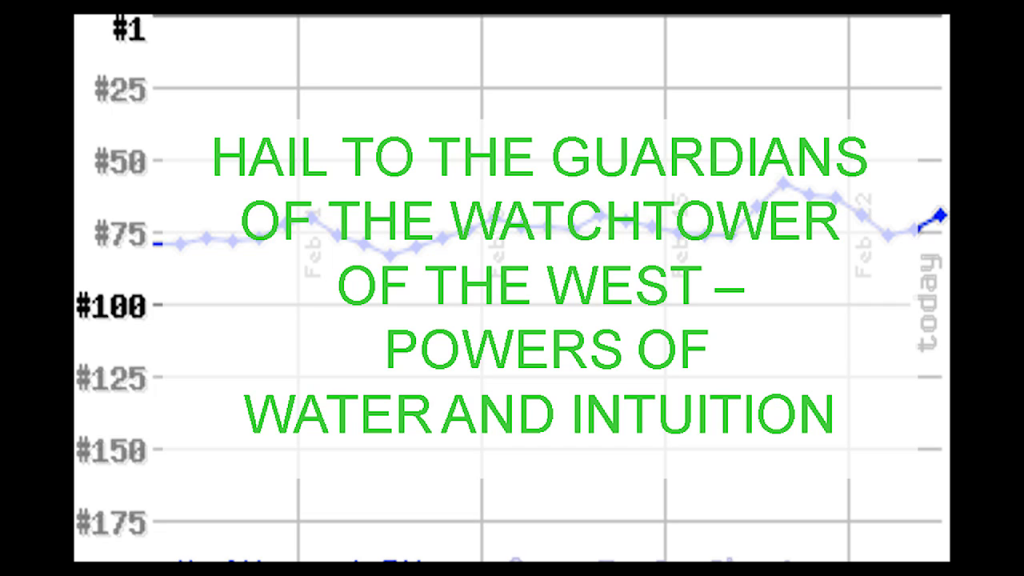
Now this matters when we’re thinking particularly around innovation and technology, because innovation is fundamentally forward-looking. You don’t really develop things without expecting them to have some kind of impact on the world itself. Generally, creating new technologies and these things is about intention. You’re having the intention of making something and seeing how that thing starts the shift itself.
So you can’t really work through making, through generating, through creating, without some kind of expectation about what you think is going to happen in that place, and who specifically you think is going to be affected by it, too.
So the next watchtower, of water and feeling.
One of the expectations that come into play is this idea of the idealized behavior of the future users, of who’s going to be using a technology and how they’re going to be using it. This kind of vision can start to scrape through the process of development right from the very beginning, to the point where things start to get bundle together, resources get held up, projects get pulled over there, Powerpoints get made, presentations are held, and an idea of “we’re making this for this person, and this group, and that’s how they’re going to behave” and this spectral haunting funnels through.
Around last autumn, Apple released a new health app as part of the new iOS and a friend, a technologist down in London, Nat Buckley, went through this and realized as they were looking through the health app that there was absolutely nothing in there at all that would allow for the tracking of menstruation, the tracking of periods. You couldn’t track it yourself in this app and you couldn’t really use third parties to integrate this, either. You could, if you wanted to, check your stocks and your share prices, but that was kind of an expectation about who might be doing that instead of who might be wanting to track their periods.
So already there’s this idea that whoever’s going to be using this [holds up cell phone] and whoever’s going to be trying to get a sense of what a phone can do and what kind of apps might come with it, either their idea [is] they’re not necessarily going to be menstruating, or this has been completely abstracted from the beginning.
That’s kind of the absence of a vision. The absence of a spectral vision of this person who might be using it. And even when the visions get scraped and bundled into the technologies themselves, it still can get weird and skewed and warped quite easily. There are a ton of examples I could’ve picked for talking about the scripting of users into technologies, but I went for period apps because of this lovely moment at the very beginning of The Craft where two of the girls are talking to each other and one of them is wielding this massive almanac that she’s got in her hand and says, “Well I think the almanac says that something will bring something today. Something will happen.” And Nancy, who’s played by Fairuza Balk, just sneers at her and says, “Yeah, I think I’m getting my rag.”
There’s a lot of period apps that recognize yeah, there are people who are going to be wanting to track their periods using this thing, but it still has a very specific idea of who these people are. It generally tends to assume for a cisgendered woman. It tends to assume for heteronormativity, for the form of sexual activity that is probably going to result in pregnancy. And it assumes that the only reason really to use any kind of period tracker would be to match fertility against menstruation to see where those two things lock together. And there’s no real idea in these things that there’s any sense that you might use it for any other health reasons, curiosity, wanting to scrape the data and turn it into some gigantic art project. It’s just this very tight, narrow focus of fertility and menstruation held in place together.
And these things also are bound with a very fixed idea of what femininity is. They’re generally bright pink or puce or magenta and covered in flowers, and they’re fairly horrible. I can’t speak for anyone else in this room, but I know that when I get pre-menstrual that my mood tends between murderously angry and tearful, so it’s kind of like Patrick Bateman but crying. And a bright pink period app at that stage is generally not what I tend to need.
But again this aspect of health also gets bundled into the actual technology itself. After this health app came out from Apple, there was a wonderful article that got written in The Atlantic by Rose Eveleth that started to pull back and was like, “Hang on one second. How deep does this actually go?” She was looking at quantified self technologies as well, and got the sense from looking at them that the technologies that were being built into phones as far as tracking systems were being built and predicated on the idea that the person that was using them would have them around all day. So as one of the people that she interviewed, Whitney Erin Boesel, said,
“Many apps operate under the assumption that your phone is always connected to you, in pockets that women don’t really have.”
Rose Eveleth, “How Self-Tracking Apps Exclude Women”
Again, this goes beyond gender. There’s an idea of this very culturally-specific expectation of a user who’s always going to be wearing quite snugly-fitting probably trousers, probably with a pocket where they’ve got the phone on them constantly so you can get this passive data tracking that comes with it as well.
This might just be oversight, it might just be an inability to recognize the structures around gender and race and sexuality and privilege that permeate everything. Although it might be deliberate political intents that come with summoning expectations as well.
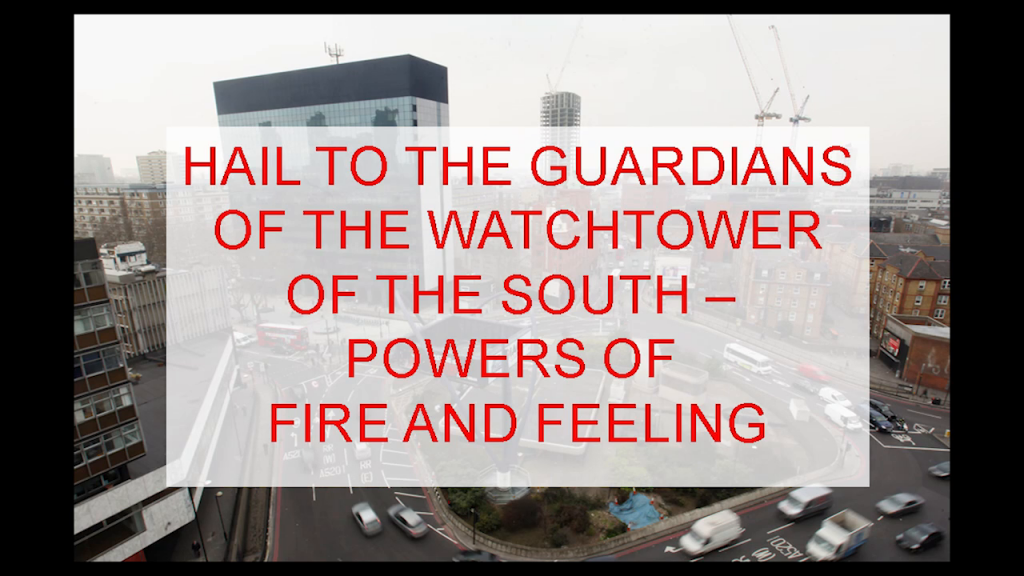
So visions are highly political, and again you can see this in terms of the position that seers would have with armies, the position that an astronomer might have with a member of Parliament. It’s not just that they provide a vision as a means of hauling resources in and of cementing a point of view, and then getting that point of view through the world. It’s not just about having this thing, it’s about what this thing actually does as well.
You see that a lot with the kind of work that’s been happening around the gentrification, the overhauling, the massive rebuilding of cities. Particularly cities in the UK, but you’ve seen it in Manchester but also particularly in London where there’s cranes everywhere at the moment like some kind of zombie army horde for developers, doing their will and changing the world around them.
But in order to get this stuff into play, in order to shape the material landscape of the world, you still need to have visions in place. You still need to have something in place that’s there to say, “That thing, can you see that? That’s what we’re moving towards. You just bring your money, and you bring your investment, and that’s where we’re going to be going with it, that over there, and that’s fine.”
It’s happening in two parts of London in particular, both of which to an extent relate to the Olympic legacy in one way or another. Down in Soho, before the Olympics happened, there was an attempt with other parts of London to clean it up and to make it a space that was safe, where tourists would come spend their money. So there was this visioning happening to kind of scrape Soho out from being what it had been and to being a sanitized, safer place. What was involved was scraping out what property developers and development agencies were defining as “least desirable” of the area. People and groups who’d been in play for a very very long time.
This included sex workers. This included some of the sex stores, which have now been shut down. In the past few months, past few years, that’s also included various queer, various LGBT clubs. So all these things have gently and not-so-gently started to be pushed and shifted and closed out of the area because that’s not what the people who are trying to summon resources into the area necessarily want. But, it’s not just enough to have that. There’s also this kind of trying to cling on to some form of history, whilst you’re projecting this imagined future out to try and summon forth the future with it.
So this is a form of place branding, which Marjana Johansson talks about, saying,
The aim of place branding is to present a sanitized appealing image of place which inevitably selects certain elements to be included in official messages while disregarding or erasing other elements.
Marjana Johansson, Place Branding and the Imaginary: The Politics of Re-imagining a Garden City
One of the interesting things about Soho in particular is that the architects involved in this have been very clear in their role specifically in transforming what they describe as Soho’s seediest alleyways, and they’re going to scrape it out and fill it with visions of delis and shops and restaurants. Nice clean things that will summon people into that space.
But this imaginary city, this sort Utopia doesn’t really exist on its own. While it wishes away the dirt and the complexities, it offers a reconstructed past to hold it up as well. One of the things that they’re keeping for this area, which they have on the web site, amidst all the renders, is the “historic” neon sign of the strip club that was owned by the pornographer Paul Raymond for Raymond’s Revuebar.
They’re keeping this. That’s fine because that’s just a nice little image to ground these things in as a “global icon for Soho” but not anything else that might itself be associated with these elements. But that thing in itself, that’s fine. That’s safe.
The other part of London where this is happening, as Natalie mentioned earlier, around East London and Old Street. In 2010 the government started to try and bolt on a legacy vision to the tech cluster that they saw was happening there. They were trying to support it, they were trying to bring internal investment in and external, particularly foreign, investment in, and they were trying to do what they were calling trying to bring together the excitement of Shoreditch with the heart of the Olympic village.
But in order to do that, they had to get some big visions hauled down from the sky with very very large ropes and very very large bits of machinery as well, in trying to desperately make this thing stick. Because what they had didn’t really work particularly as a vision. In some of the material they produced for foreign investors, they said this is East London and you’ve got Shoreditch and you’ve got Stratford, but those things on the map are miles apart from each other, but were held up in this vision of being this single space where the money could generally be poured into.
The other thing which made it difficult was the naming of it. The naming of this area went through the kind of flapping changes that you see with horror movies like The Thing, where the thing is desperately flipping between different types of identities and forms trying to find something to grip onto and just stick, but it can’t. I don’t think this is going to work if this goes slowly but we’ll see how it goes.
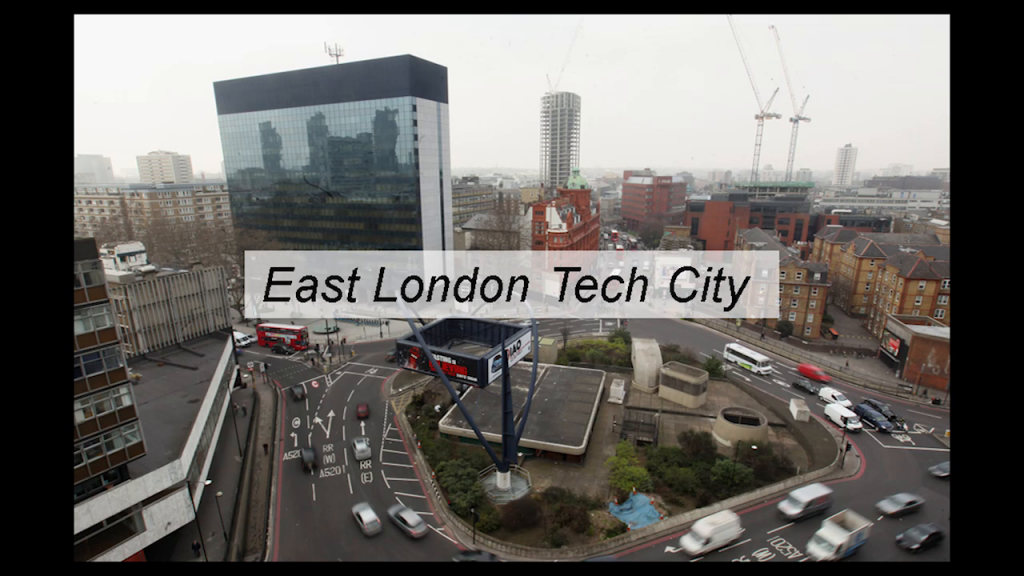
It started with East London Tech City, then it became Tech City East, then it became Tech City UK, Tech City UK (UK), and now Tech City. It’s not actually Tech City Croydon; this is Old Street. But it’s been like, “What? What? Where? There? Oh Christ, make it Croydon. Fine. Okay.” So now it’s more of a franchise than an actual thing. The most interesting thing about this from my perspective is that it hasn’t stuck. You can throw a vision out in the air, but it doesn’t mean that anyone’s going to hold onto it if they don’t want it. There’s these kind of fabulous modes of resistance that are out there. And there’s this work I’ve been doing for the past few years with Max Nathan and Emma Vandore on what’s happening here, starting from the principles that a lot of social research start from, which is kinda of, “What the hell…?” And then you go on from there.
In the interviews that these guys did very early on, they said, “Tech City’s what government people call it. I don’t think I’ve heard anyone call it ‘Tech City’ without some sort of air quotes.” [p. 76] It’s a vision, but it’s not a vision that’s sticking particularly hard at the moment. It’s got the politics. It’s got political agency behind it, certainly from an urban planning and support point of view, but it hasn’t necessarily go the power to wield it.
So visions get embedded into policy and they’re about exacting widespread change, but you need power to push these things through, you need big cases, big support to try and get this thing ultimately to hit the ground and to get it there, to make it real, to summon this vision out of the sky.
One of the biggest spaces where this idea of anticipation and vision making expectations comes in is with this idea of responsible innovation, which is very broadly this idea about trying to address massive massive social problems through some kind of curating and care for the future by setting stuff in play now. So these are big social problems that require large government intention and organization to be brought into them. It’s kind of, I would say on the scale of the Jager Program. That was one of the things that struck me when I watched Pacific Rim. But the other one is climate change. This is one of the massive massive global, all-encompassing problems that needs a fair amount of visioning and a fair amount of expectations to be set and say we are going to make big changes, we have to make big changes, and they’re going to involve all the governments, and it’s going to involve huge amounts of organizations. It requires will and it requires intent so Christ, we need to make sure that we can set up some expectations to get there.
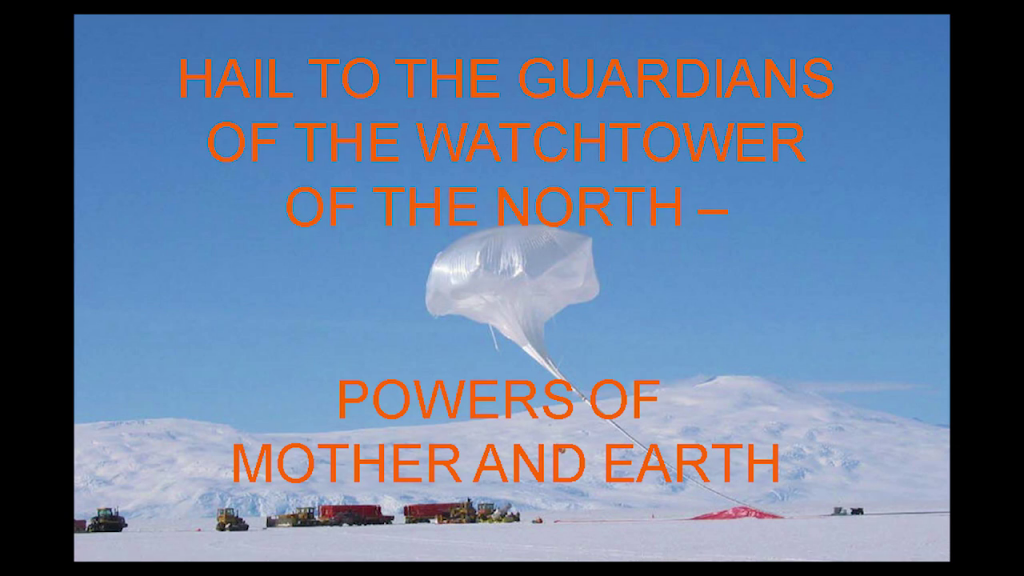
There are ways of addressing climate change, and reducing emissions is one of the big ones. But one of the other things that’s come up really comparatively recently, in the past few years, is this idea of geoengineering. This is broadly attempting to apply engineering to the air, to the earth, to the oceans, and potentially to fire as well, in some way to bring down carbon levels, to change the earth itself, to reduce the climate heat. The ideas that’ve been offered up by geoengineering are at the polite level of “fanciful.” Some people have referred to them as magical, not necessarily in a pleasant way. They are fantastical. They might be something that you could think of in terms…Dan Dare comics would not be a million miles from this.
These are ideas that’ve been mooted in terms of “Geoengineering, what might it involve?” So you might want to, via some fantastic balloon, spray sun-reflecting chemicals into the atmosphere to make the planet reflect more sunlight, maybe. You could fertilize the oceans with iron to produce algae for a carbon sink, maybe. You could enclose the earth in a ring of space dust, woo! Maybe. Maybe. And the “maybe” is the massive part here, because none of this is real yet. These are just ideas that’ve so far been shown up as a way to potentially address climate change through this thing.
But if we’re perhaps not being so charitable towards it, as many many social scientists are, you could call these ideas “wildly, utterly, howlingly barking mad.” You could call them things like “the new best bad idea.”
The ideas around geoengineering could potentially be classified as the Bad Idea Bears of heavy engineering. They’re not real, but they’re also not particularly good, either. The technology does not exist. None of the technologies that have been proposed around these things really on a massive scale have existed…at all. They’re ideas, they’re summonings in the ether. We haven’t been able to get closer to doing these things than we have been since the end of World War II.
But that doesn’t necessarily mean that the visions aren’t starting to have some kind of effect on the world. There was a report that came out from the National Academies of Sciences a couple of weeks ago by 16 major scientists, and while they said, “Yeah, some of these ideas might be a little unrealistic, some of them maybe not, but maybe we should do some more research. Just a bit of research, to see which of these ideas are feasible, what might work for us, because climate change is a big thing. We should probably try and figure that out.”
This might sound reasonable. This might sound like yeah, okay. We’ve got these ideas, these visions over there, and maybe we could start to haul them back a bit and see what hits the ground. In a piece that Jack Stilgoe at University College London wrote about this, he was just like, “Mmmmmm…but.”
The worry is that research programs may themselves contribute to the overhyping of geoengineering as a possible alternative to conventional approaches to climate change.
Jack Stilgoe, “Rethinking the unthinkable”
What this means is that firstly you’ve already got these narratives in place, and when you start to get these narratives in play that starts to kind of actually make them real. They’re not really real yet, but they’re starting to get real because they’re familiar. And when they’re familiar they’re knowable, and people are like, “Yeah yeah, I’ve heard about that. I thought we were doing that.”
When you start to do research, and there are small amounts of research on this— When you start doing the big-scale research that’s supported by large, brilliant scientific institutions with potentially government or private money, you start to summon this thing out of the air. You start to make these narratives normal, you legitimate them, you make them move beyond performative expectations, you get research teams set up, you post-docs set up, you potentially get new journals, you get conferences, you get legitimacy. And this thing that was there as some kind of no-good bad idea is now suddenly kind of there, and suddenly kind of happening. It also takes away from other forms of action that could be taken, like reducing emissions. But this is just like, well okay, it’s just that small thing right there.
At the end of The Craft, things kind of fall apart, really. The girls have summoned all this stuff into being and they can’t control it. The love spell goes horribly wrong. They realize their behavior’s being changed. They realize that the things they were wanting, they can’t deal with it comes but they also didn’t have control over it. The Sarah character goes to the owner of the magic shop and goes, “My God, what have we done? I set up this love spell. How do I take it back?” And the owner of the magic shop looks at her and says, “How do you stop the floodgates?” When these visions are out in the world, what are you going to do? These things are there now.
But it actually ends not on that bad note, but as a form of countering of the visions. Sarah, our protagonist, has managed throughout the film to develop her own visions and her own power particularly. And when targeting them against the others of the group manages to kind of collapse that collective vision down and bring it to a space where the visions themselves are countered and gently flattened, and there is relative calm by the end.
So visions and social expectations are about power, and they’re about the contest to shape the future. They’re about ascribing meaning to certain concepts, about hauling them into being, and those with power and dominance will certainly have some form of strength and effectiveness in defining and defusing what our future will be. But, there are always going to be modes of resistance in this, in the battle over expectations is never actually complete.
Thank you.
Further Reference
The Haunted Machines site, where Georgina has a short piece “The Howling Wind, the Swerving Air.”
Dedicated page for Haunted Machines at the main FutureEverything site.
